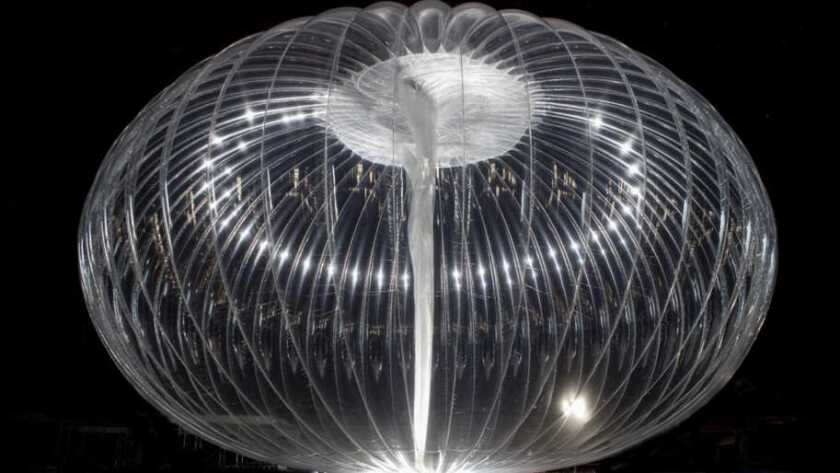The company will use the money for business research and development into high-altitude platform stations (HAPS) and other HAPS-related costs.
Today’s announcement comes just days after four other companies, three of them Japanese, said they were studying the feasibility of collaborating on HAPS-based connectivity services as part of a future space-based wireless connectivity ecosystem.
The four, which signed a memorandum of understanding (MoU) earlier this week, are sister companies NTT and NTT DoCoMo, plus Japanese satellite company Sky Perfect JSat, as well as French aerospace company Airbus.
The fund-raising marks a significant increase in HAPS work by SoftBank, which has been working on the technology for a number of years with experiments in New Mexico. The company also last year acquired more than 200 HAPS patents from a sister company of Google, after parent company Alphabet decided to close its Loon project (pictured).
SoftBank said earlier today that it will raise the $263 million in two funds, each of 15 billion yen. One is an unsecured sustainability bond with a seven-year term; the other has a 10-year term.
The company said the purpose was “realizing a society where everyone is connected” and said proceeds will be used for SoftBank’s “business that aims to provide wide-area and stable telecommunication networks from the stratosphere”.
It added that the HAPS bond was recognised as a sustainable development goals (SDG) bond in Japan. “Proceeds from SDG Bonds are used for businesses that solve environmental and social issues,” the company said.
The MoU from NTT, DoCoMo, Sky Perfect JSat and Airbus said the four “will attempt to identify the early deployment requirements of a HAPS-based network”. The collaboration will investigate the use of the Airbus Zephyr, a solar-powered, stratospheric unmanned aerial system, working with the wireless communication networks of the other three companies.
The four said that “HAPS networks are deemed to be a relatively easy solution for air and sea connectivity and an effective platform for deploying disaster countermeasures and many industrial applications”.
But they also suggested this would be a route space-based wireless broadband services, for 5G and eventually 6G.
They said non-terrestrial network (NTN) technologies would use geostationary-orbit (GEO) satellites and low Earth-orbit (LEO) satellites, and introduced the term “space RAN” for a space-based radio access network.






